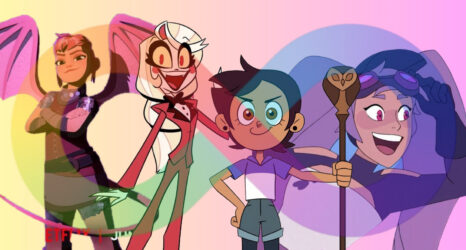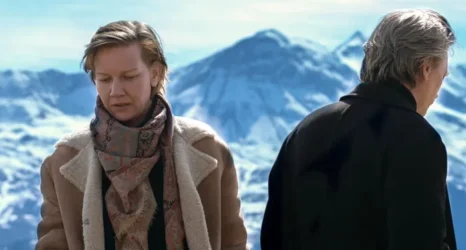Earlier this week, Disney Animation Studios announced a late-2016 release date for its 56th animated feature, Moana, a musical comedy-adventure that will transport viewers to the South Seas to a world of sea creatures, underworlds and Polynesian folklore. Moana will be Disney’s first-ever Pacific Islander princess and second protagonist from the region (second only to Lilo from Lilo & Stitch). She comes in the wake of four white princesses (Rapunzel, Merida, Anna and Elsa) who, while beloved, have done little to shift Disney’s racial bias.
Set 2,000 years ago in ancient Oceana, the film will center on Moana, a 14-year-old girl who Disney describes as “spirited,” “passionate” and “indomitable.” The eponymous princess will undertake an “impossible mission to fulfill her ancestors’ quest,” which involves teaming up with demigod Maui and searching for a legendary island. Beyond that teaser, Disney has kept mum on the film’s details.
While Moana features plot devices and characters that directors John Musker and Ron Clements know well—water wonders, musical hits, princesses and sidekicks—their handling of cultural representation has occasionally put them in rough waters: In The Little Mermaid (1989), Ursula (a villain we love to hate) is othered by her non-conformance to Western standards of beauty. Living in an underwater world of bikini-clad mermaid princesses, her obese and butch presentation visually positions her as an outsider. In Aladdin (1992), a similar story of “otherness” unfolds. The entire cast appears whitewashed in a Middle Eastern context, with the exception of Jafar—the film’s villain—who has a darker skin tone and stronger Arabic features. Such consternation is even more exacerbated in The Princess and the Frog (2009): Naveen, the prince character, has lighter skin than the other characters (including both Princess Tiana and the villain, Dr. Facilier). It’s a plot formulation reeking of “white man saves brown woman from brown man.”
Yikes. The good news is Musker and Clements are taking preemptive steps to avoid their previous failings. Borrowing a strategy from Frozen—which sent its production designer and art production team to Norway to acquaint themselves with the film’s setting—Musker and Clements have undertaken a similar research approach by traveling to the South Seas. In an interview with The Huffington Post, Clements recounts their two trips:
When we visited [the] islands, John and I were especially interested in meeting people who lived on islands where they had grown up surrounded by an ocean. We wondered how that might effect your point of view. … We learned all kinds of things that we didn’t know. We learned how the sea and the land are one and the same. How these people think of the ocean as something that unites the islands, not something that separates them, and then we learned about the great migration and how the people of the islands take great pride in the fact that their ancient ancestors invented this way of navigation called dead reckoning which involved studying the stars and the currents.
While their research strategy quelled some of my initial unease, the duo’s draw to the South Pacific seems to stem from exoticism rather than a genuine desire to learn. In the same interview, Musker explains how he “grew up reading the novels of Melville and Conrad, and the South Seas, the exotic world that a lot of their stories are set in, was extremely intriguing.” This exoticism seems to propel the film (rather than a genuine desire to portray Moana as a nuanced, complex character who happens to come from a different cultural heritage than the two white directors).
The good news is that even though Musker and Clements have a tendency to insert a Westernized, Eurocentric narrative into an “other” setting without incorporating the “other’s” cultural differences into the film’s seams—think Aladdin and The Princess and the Frog—a native New Zealander is responsible for the Moana script. According to Film Divider, Oscar-nominated filmmaker and comedy-award winner Taika Waititi wrote the film, a detail Waititi confirms via Twitter. Waititi, a descendent of the Te-Whānau-ā-Apanui tribe, can hopefully shed light on Polynesia’s indigenous peoples in a nuanced and informed manner.
While his addition to the team is certainly a step forward, there’s still a large demographic missing from Moana’s production team: women. With the exception of producer Osnat Shurer, the team behind Disney’s girl-centric princess adventure is stacked with men. (Face palm.)
This gender breakdown is unfortunately common for Disney. Frozen was the first Walt Disney film to have a woman director (Jennifer Lee), and while it’s appalling that Lee was the first woman in this role, her vision and direction greatly shaped the final product. Chris Buck, co-director of Frozen, credits Lee with “creating some of the best female characters we’ve ever done, the most fully realized, the most three-dimensional. These aren’t female characters that are put up on a pedestal; these are real, gritty, flawed females that are just human.” Fancy that: a women director creates more rounded, complex women characters.
While Disney’s track record has given us many reasons to approach Moana with caution, the film is encouraging for many reasons: Firstly, Moana offers another representation of a princess of color—a detail not to be taken for granted or overlooked. The film also reestablishes Walt Disney Animation’s commitment to girl-centric narratives, a genre the company shied away from in the earlier 2000s (think Atlantis the Lost Emperor, Treasure Planet and Brother Bear). Based on the recent box-office success of princess stories, this return is likely financially driven.
It’s worth pointing out, however, that even as Disney gradually shifted back to girl protagonists, the girls didn’t get credit in their respective titles. Compared to Disney’s early films (think Snow White and Cinderella), the titles of Tangled, Brave and Frozen all mask the heroes’ gender. Since the early 2000s, this gender neutrality in Disney titles has become common, allowing publicity campaigns to target boys and girls. With Moana, Disney is making a bold thematic (and financial) decision: assuming both boys and girls will be drawn to the plot and the characters of the film, regardless of the protagonist’s gender. This move is empowering to Moana and to little girls everywhere, as if Disney is saying, “Your story matters and will not be defined by your gender.”
With two years to go, Musker and Clements have time to improve on their past blunders. We recommend adding more women to the central planning team (go figure) and continuing to learn from Polynesian culture rather than using it as a pretty backdrop and merely dropping in a stereotypical story. In the meantime, we’ll wait impatiently for Moana, who producer Osnat Shurer calls a “kick-ass, feisty, interesting female protagonist,” to appear on our screens. OK team, all hands on deck.
Photo courtesy of the Disney Blog.





